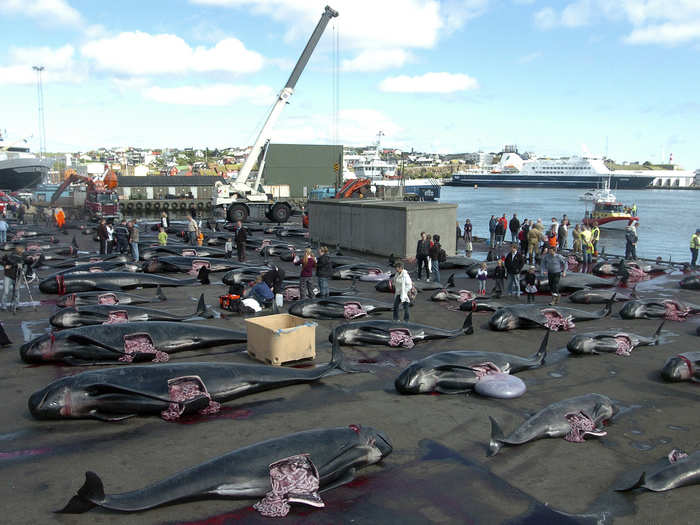- Home
- Science
- Environment
- A Massive Whale Hunt On The Faroe Islands Turns The Sea Red Every Summer
A Massive Whale Hunt On The Faroe Islands Turns The Sea Red Every Summer
The Faroe Islands are located in the middle of the Atlantic Ocean, about halfway between Scotland and Iceland. It consists of 18 islands — 17 that are inhabited by around 48,000 people.

The islands are largely self-sufficient. The Faroese economy is supported by local agriculture and hunting. Pilot whales, in particular, are a valued part of the national diet and have long been killed for their meat and blubber.
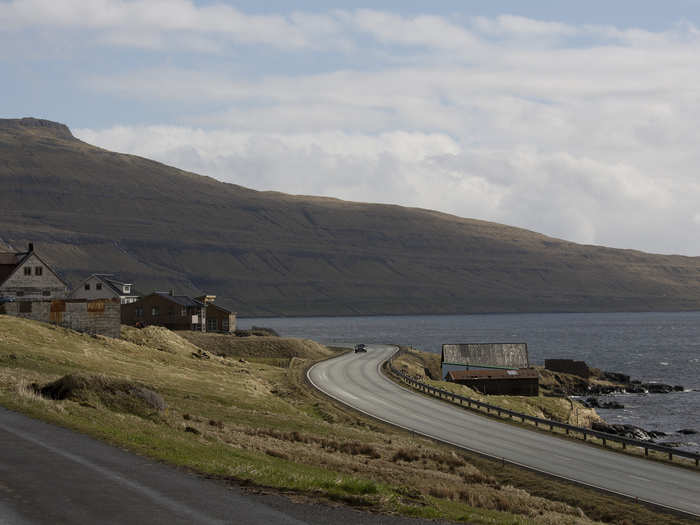
The annual whale hunt, called "grind," dates back more than 1,000 years to the first Norse settlements.
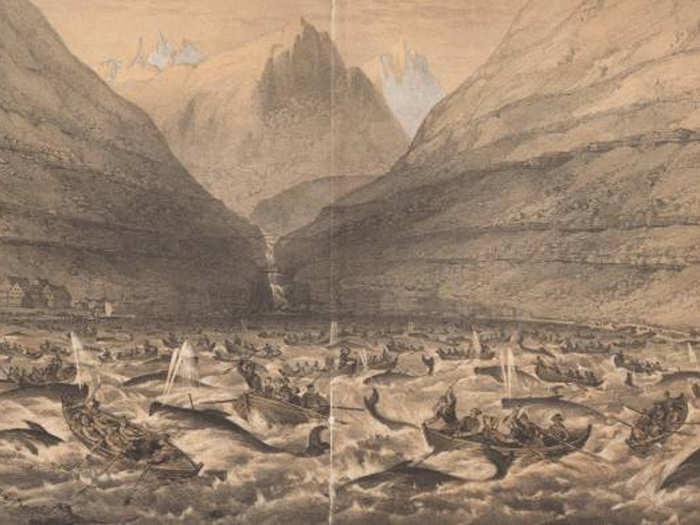
An average of 800 whales are killed each year, mainly during the summer months of July and August.
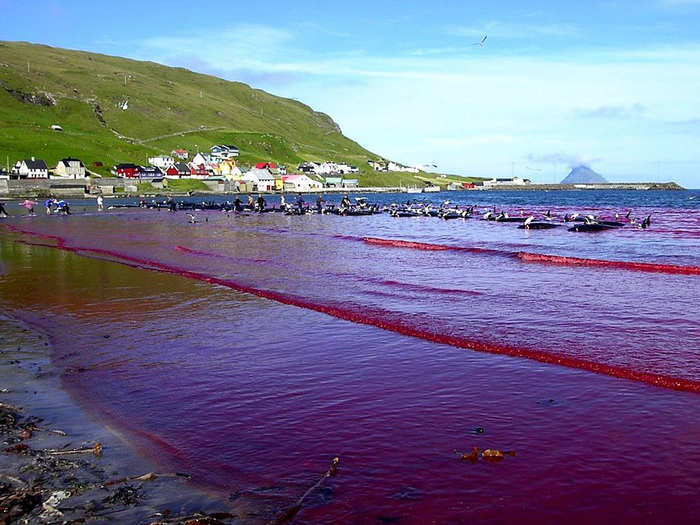
There are at least 750,000 pilot whales in the North Atlantic, so the yearly mass slaughters do not threaten the animal's population. But animal activists say the practice is cruel and outdated.

Whales and dolphins are highly intelligent, social creatures that live in family groups, which is why people are more sensitive about the treatment of these marine mammals.
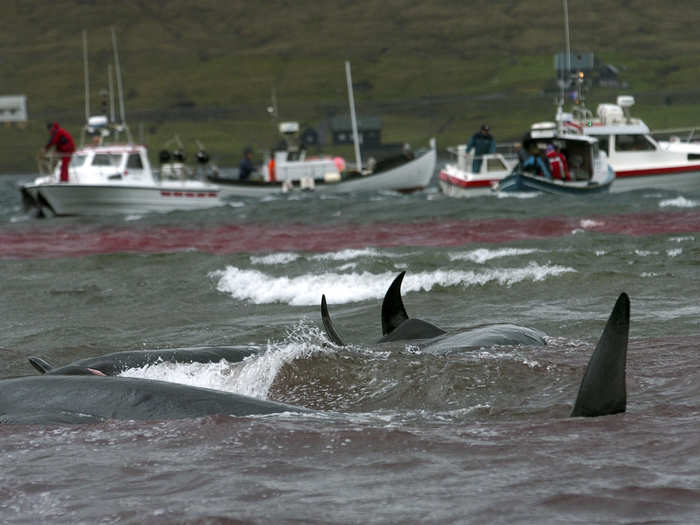
The Faroese defend the annual whale hunt as part of their culture and tradition. The massacres continue since the country controls the conservation and management of fish and whale stocks within a 200-mile fisheries zone as a self-governing nation within the Kingdom of Denmark.

The trapping, killing, and butchering of of pilot whales is only authorized if whales are spotted close to land.
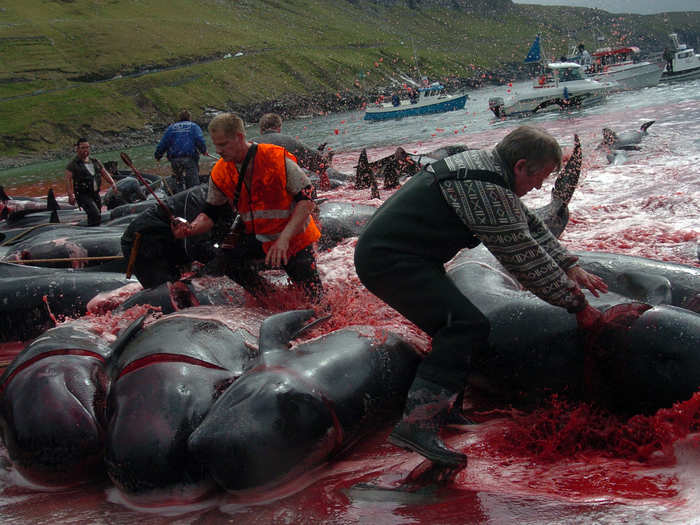
Boats will surround the whales and drive them into a shallow bay or inlet.
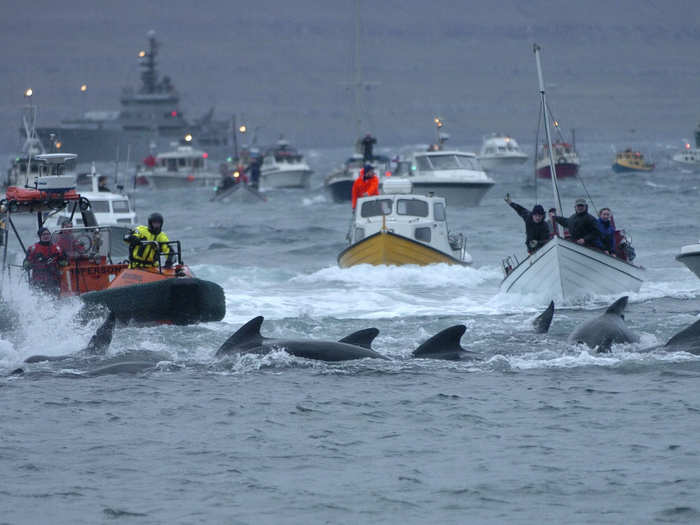
The whales are slaughtered in shallow waters or on shore after they have beached themselves.
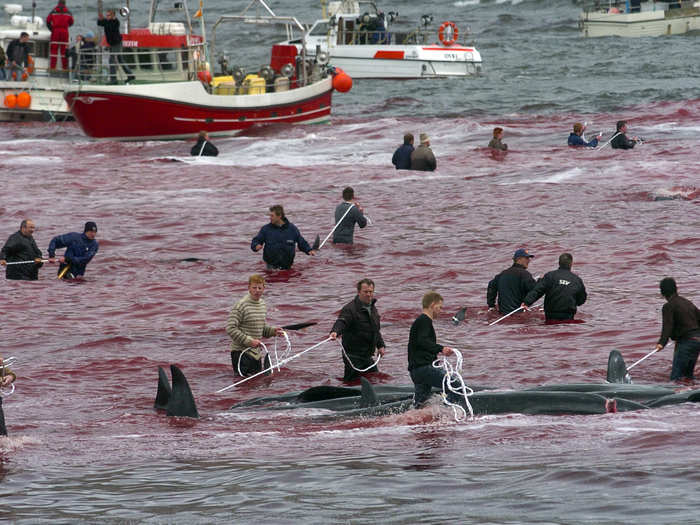
The spinal cord is severed using a special whaling knife. This cuts the main blood supply to the brain.
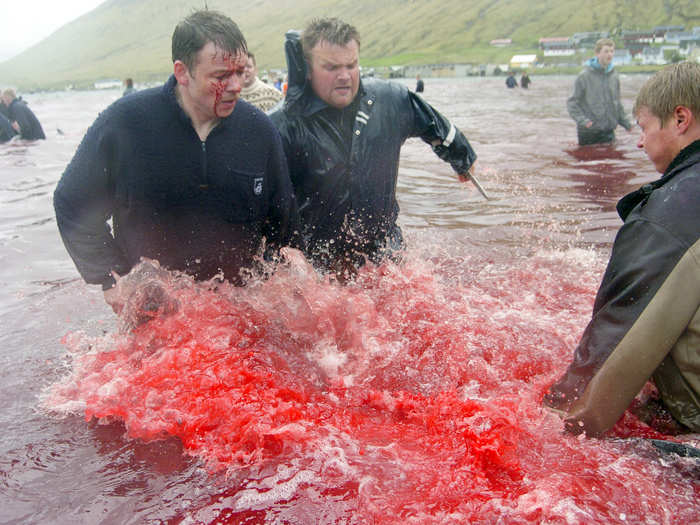
This method is designed to kill the whale within seconds.
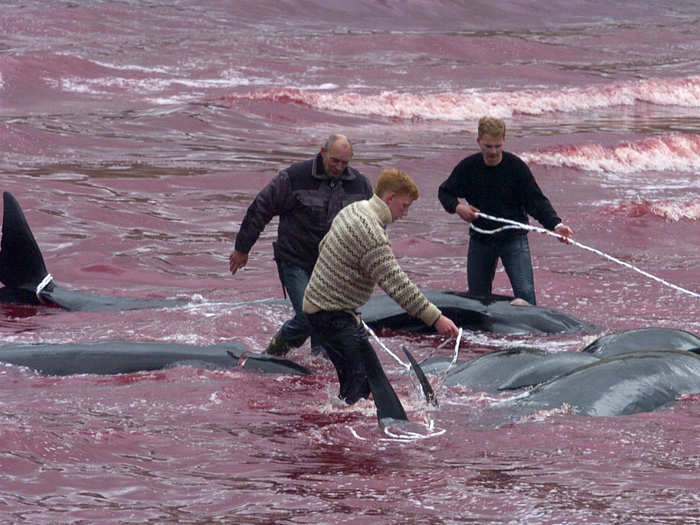
The mass slaughter turns the water into a dramatic sea of red.
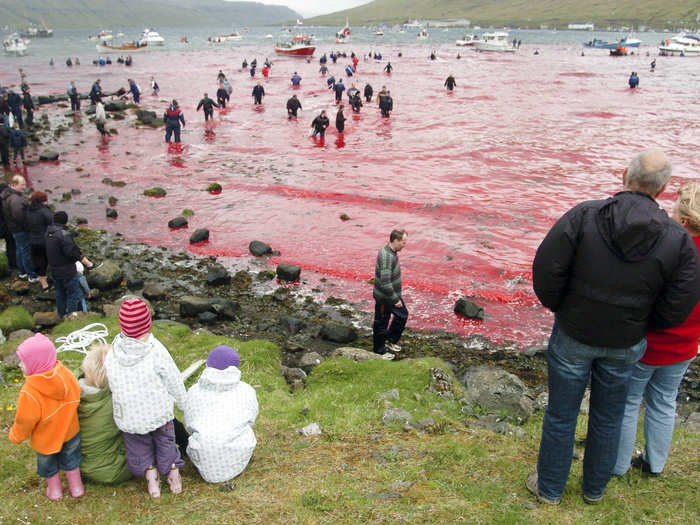
Whales that do not beach themselves must be dragged to shore using ropes.
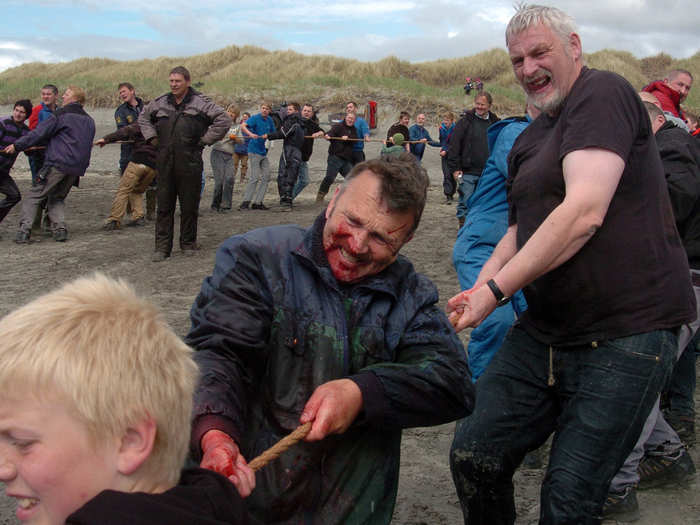
Hunters use fork-lifts and cranes to arrange the dead animals on shore.
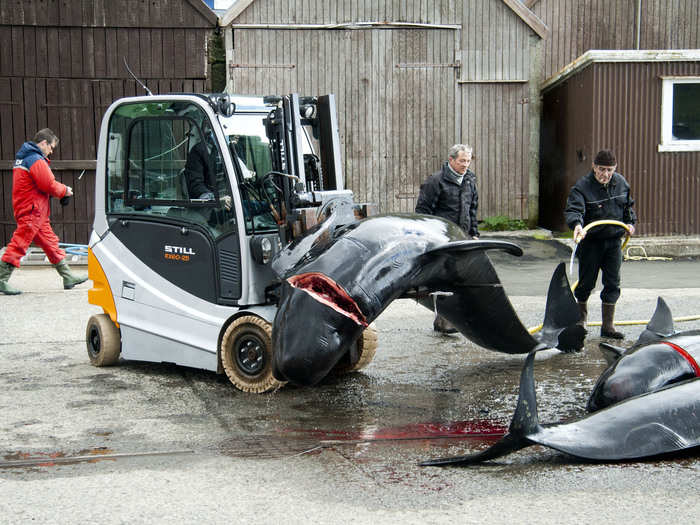
The black skin and thick blubber is peeled away, revealing the dark red meat underneath.
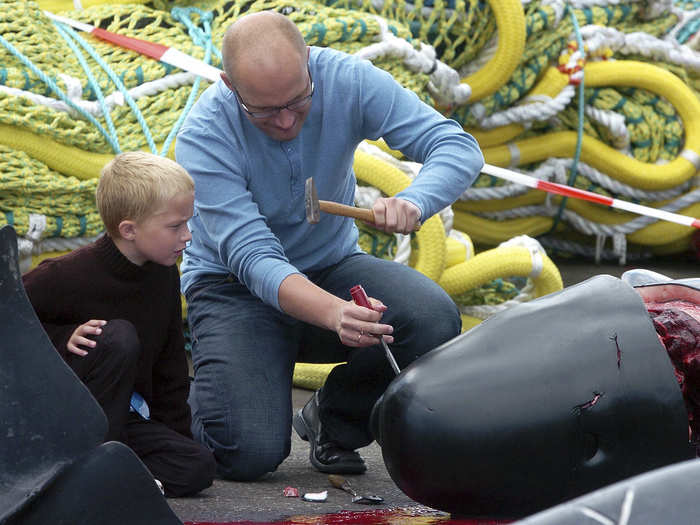
The catch is divided up among those who took part in the hunt and other residents.
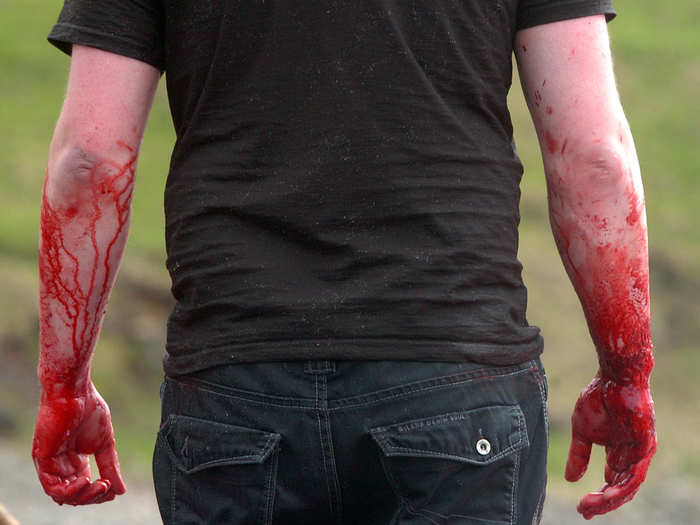
The whale meat cannot be sold commercially, although some of it may wind up in local food stores or restaurants.
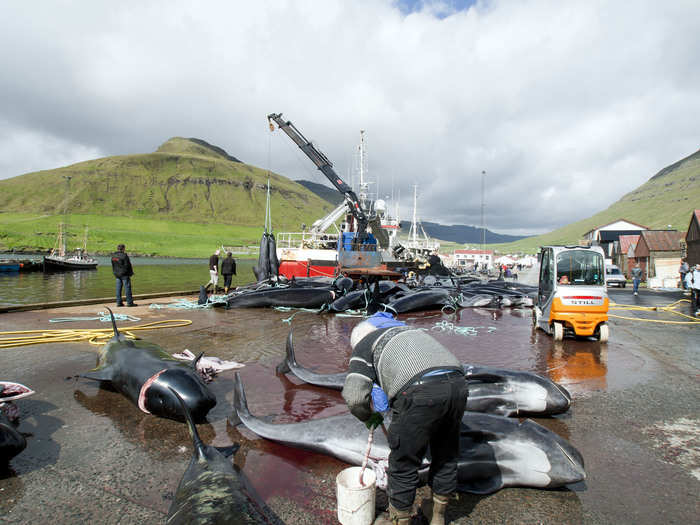
Whale meat can be prepared many different ways. Some may preserve it in salt to save for the winter. Others may cut it into strips and hang is outside to dry for a few weeks. Here is a traditional meal in which the dried meat (black) has been boiled and served with blubber (middle) and potatoes.
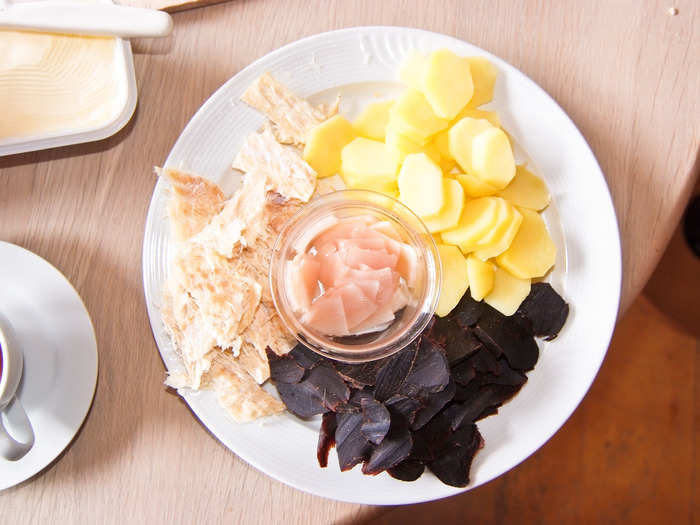
More recently, there has been some concern about the high levels of mercury and other toxins found in pilot whale meat. In 2011, the country's chief medical officers recommended that islanders only eat one meal of whale meat and blubber per month. Pregnant women should not eat any meat or blubber.
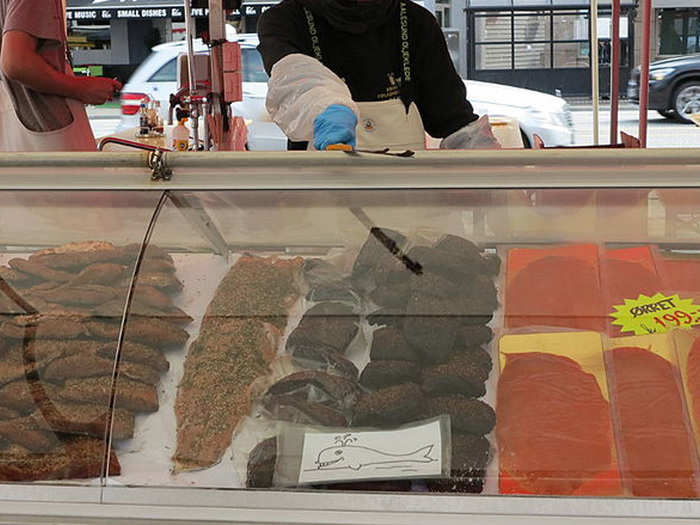
Heads to the Southern Philippines for a different kind of fishing experience.
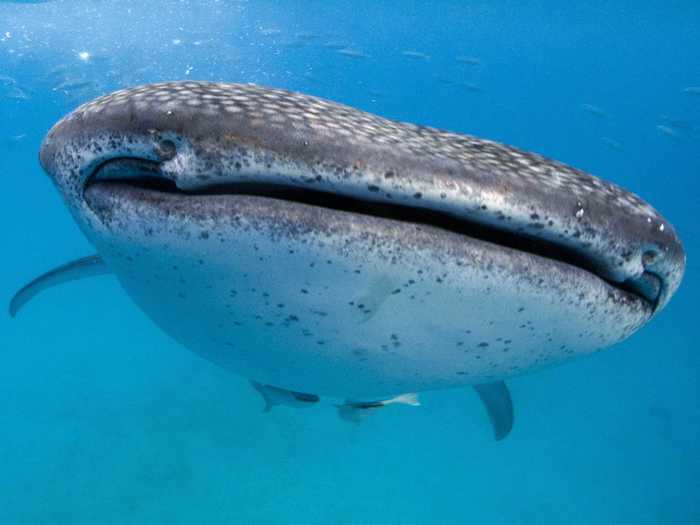
Popular Right Now
Popular Keywords
Advertisement
